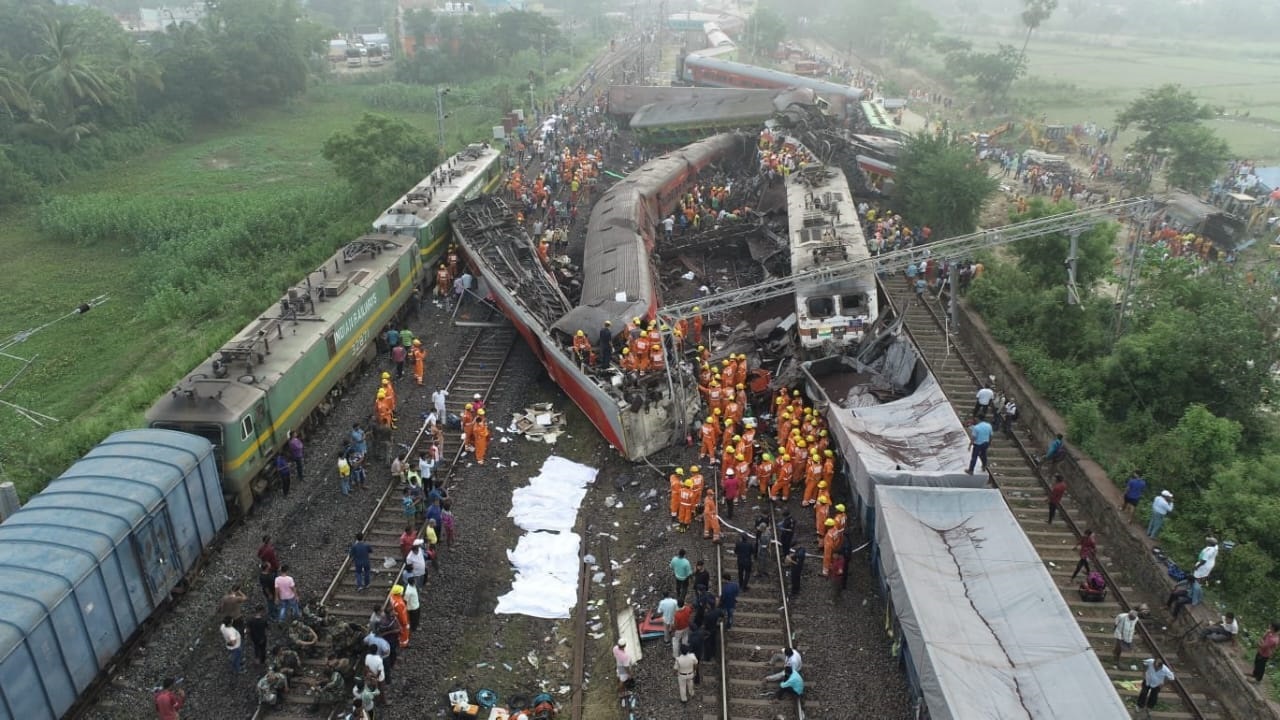If the planned modern equipment were in place as promised, the accident — which killed more than 260 people — could have been averted.

Chennai-bound Coromandel Express; Yashwantpur-Howrah Express, and a Goods Train collided near Odisha (Supplied)
On 23 March, 2022, the Ministry of Railways tested the indigenous Automatic Train Protection (ATP) system named Kavach, meaning armour, with Railway Minister Ashwini Vaishnaw himself in board one of the trains.
Developed by the Research Designs and Standards Organisation (RDSO) in collaboration with three Indian vendors, Kavach was adopted as the National ATP System for the Indian Railways.
A little more than one year and two months later, India witnessed one of its worst rail accidents, and it involved three trains.
More than 280 people perished and around 1,000 others were injured when 21 compartments of the Shalimar-Chennai Central Coromandel Express derailed after hitting a stationary freight train at the Bahanagar Bazaar Station in Odisha on Friday, 2 June.
Three compartments scattered on the adjacent track, on which the Bengaluru-Howrah Superfast Express was hurtling towards West Bengal. Two of the Howrah-bound train’s carriages, too, derailed and overturned.
The accident was followed by the Opposition’s customary demand for the railway minister’s resignation, almost a ritual after each such tragedy.
But a question remains: Do we need catastrophes to revisit government policies?
The safety of railway passengers is at stake. Questions are aplenty over the quality of carriages and the operating network.
Kavach was designed to assist locomotive pilots to avoid Signal Passing At Danger (SPAD) and speeding, besides assisting them while operating in adverse weather conditions such as dense fog.
It automatically applies the brakes if the train overshoots a signal, or is hurtling toward an incoming train, thereby preventing accidents.
Questions were raised over the efficacy of Kavach even as the death toll kept rising in the Odisha tragedy.
The questions, while germane, had nothing to do with the Odisha three-train collision. Kavach had not been implemented on the route, the Railways explained.
The Parliamentary Standing Committee on Railways, headed by Radha Mohan Singh, tabled a Railway Board report in December 2022.
It said that the Kavach technology would be eventually installed over 34,000 route kilometres of the railway in the country. To that end, ₹272.30 crore was set aside for installing Kavach in 2022–23.
An amount of ₹133 crore was released for implementing it on the 1,200-kilometre Bidar-Parli-Manmad-Secunderabad-Guntkal segment in the fiscal year 2021–22.
But the fact remains that, despite all constant talk about it, the Kavach has been installed in just a little over 1,000 route kilometres of the Indian Railways total of about 68,000 route kilometres.
So, clearly, Kavach was not in play. And that brings us back to the basics of railway safety.
Would the Kavach system have helped avoid the accident if it was in place?
Hardly, said retired loco pilot R Swaminathan.
“Here, three trains — the Chennai-bound Coromandel Express, Yashwantpur-Howrah Express, and a goods train — were involved. The Kavach kicks in only if the trains are on the same track,” he told South First, adding, “Ifs and buts are irrelevant now. It is a fact that there is no Kavach in the entire segment.”
“The primary reason for accidents in the country can be listed in three categories: Poor maintenance of tracks, malfunctioning signals, and inadequate staffing and training for railway personnel,” Swaminathan opined.
In fact, a mix-up in signalling can be the only reason the Coromandel Express went on to the loop line that had the stationary good train.
It may be recalled that on 12 February 1981, a similar accident involving three trains occurred at Vaniyambadi in Tamil Nadu.
The Madras (Chennai)-bound Trivandrum Mail, the Erode-bound Yercaud Express, and a breakaway goods wagons collided with each other.
As many as 19 people were killed and 50 others were injured in the incident.
Recalling the 1981 accident, Mohamed Mubeen, an office-bearer of the Vanniyambadi Train Passengers’ Association, said that the reason for the mishap has still not been ascertained, though there have been talks of signalling errors.
He called for a foolproof signalling system and photocells on engines to alert the pilot in case of any obstruction on the track. He also opined that the quality of carriages and tracks should be improved.
Meanwhile, there are those who say the poor maintenance of tracks led to such an accident.
The Union Ministry of Railways has prepared the National Rail Plan (NRP) 2030 to augment the rail infrastructure during the 2021-51 period.
The draft NRP, released in December 2020, noted that Railways could be left with a financing gap of over ₹2 lakh crore for its capital expenditure projects in the next five years.
It relates to the funding gap for projects under the annual work plan of Railways and the National Infrastructure Pipeline before the NRP.
It includes projects worth ₹13.7 lakh crore for track infrastructure and other maintenance works.
Speaking to South First, K Padmanaban, a former Zonal Railway Consultative Committee (ZRCC) member of the Southern Railway, said that the Railways’ top priority should be the safety of passengers, which has often been ignored.
“There are reports that the Coromandel Express approaching a loop line at high speeds. These reports are not acceptable. Those who know the technicalities of train piloting will not accept this argument. A train can travel only at a maximum speed of 30 kmph on loop lines,” he said.
He also stated that the Union government should focus on ensuring the safety of the passengers than privatising the department.
There is the view that the poor condition of tracks leads to derailments. There is a huge backlog of tracks that are to be renovated.

In the 2022-23 Budget, the allocations for track renewals were cut down
In the 2022-23 Budget, the allocations for track renewals were cut by 14 percent.
“Additional funds for the safety of the passengers should be allotted in the railway budget and an officer should be appointed in every division to ensure the safety of the passengers,” Padmanaban said.
Also, primary maintenance should be periodically done and the maintenance of track and signals should be taken up without any compromise.
“These are the key factors to avoid such accidents in the future,” he said.
In 2018, the Union government announced that it would purchase modern equipment, such as automatic track geometry-cum-video inspection systems, ballast regulating machines, rail grinding machines, automated multifunction track recording cars, and ultrasonic flaw detection systems,
It allotted ₹2,700 crore for the procurement of the equipment.
The Railway Ministry announced that these would be fitted under the last coach or the guard’s van of Rajdhani Express trains before extending them to other express and superfast trains.
Five years on, the project has not even covered 40 percent of the trains.
“The Chennai-bound Coromandel Express travels 1,659 kilometres with 17 stoppages. If these modern equipment were in place as promised, the accident could have been averted,” Swaminathan said.

Jul 26, 2024

Jul 25, 2024

Jul 21, 2024

Jul 21, 2024

Jul 21, 2024

Jul 21, 2024